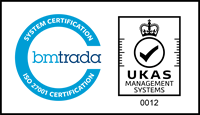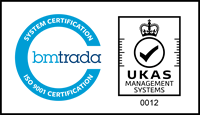Blog
Benefits audit: are your benefits supporting workplace wellbeing and productivity?
Posted on: Wednesday October 14, 2020

The conversation on employee wellbeing has shifted from a ‘nice-to-have’ model to become an essential part of any employee offer.
The reasons for this are two-fold; in the short term, the COVID-19 pandemic has made us more aware than ever of the importance of employee health and wellbeing in the workplace. Meanwhile, the World Health Organization predicted back in 2016 that the development of ‘health-promoting workplaces’ would be a prerequisite for sustainable social and economic development in the future.
Second, organisations are increasingly recognising that the benefits of wellbeing provisions may extend beyond simple return on investment. Costs linked to absenteeism, presenteeism and employee turnover are areas of legitimate business concern, but it’s also worth considering the less tangible benefits. By demonstrating that you care about workers’ health, especially outside work hours, you become more attractive as an employer to those looking for new opportunities and increase engagement among existing employees.
So if you haven’t already, now is the time to look holistically at your employee deal. Consider how you are currently supporting your employees’ mental, physical, financial and social wellbeing, and what you can implement or enhance to optimise your provision.
Employee benefits are one of the most important ways to deliver wellbeing programmes. Start with a basic audit that involves asking staff, either throughout an organisation or in a particular department, to answer questions anonymously about their current benefit package. Combine this with data on take-up rate to help assess whether your benefits are delivering the required value.
For each existing benefit, have some key questions in mind:
- Who’s using it at the moment?
- How much value do they get from it?
- Are there groups of employees who don’t seem engaged with the idea?
- If so, could you adjust how you administer or communicate the benefit in order to reach a wider audience?
- Is there an alternative benefit you could provide instead that would be more useful?
It’s also worth considering what data you have available on the difference wellbeing initiatives make to your employees’ health overall. HR usually only sees the end result in terms of hard data - absence figures and the like.
However, consider reaching out to your workforce for anecdotal evidence of how a particular benefit may have helped improve their wellbeing. These can be very helpful when building the case for wellbeing investment to achieve less easily measured results, such as improved employee engagement and loyalty, with consequent gains for performance and productivity.
As mentioned above, the conversation around employee wellbeing has shifted with many organisations now considering it part of their Corporate Social Responsibility (CSR). Far from meddling in employees’ affairs, empowering your people to improve their own health is increasingly seen as ‘the right thing to do.’
Furthermore, by setting a good example within your industry you are driving a cultural shift towards valuing the employee as a whole person, with consequent advantages for their health and wellbeing in the long-term.
This article was originally published 30th September 2020 via Reward & Employee Benefits Association (REBA).
Looking to step up your wellbeing game?
Transform™ powered by TruConnect and delivered by Hapi completes a total wellbeing solution - with hundreds of workout classes, motivational messages, mental health support, healthy recipes, tools for a better night’s sleep and stress management techniques.
Cost vs Value – What Really Matters in Health Benefits?
When it comes to creating employee health benefits, there’s always a tug-of-war between keeping costs low and focusing on the actual value those benefits bring.
Posted on: 11 April 2025 by Andrew Walker, New Business Development Director
Top Tips to Improve a Misfiring Recognition Strategy
Whether you’re a professional footballer, engineer or care worker, happiness at work relies on feeling valued, appreciated and respected.
Posted on: 28 March 2025 by Andrew Walker, New Business Development Director
Brace Yourselves: Reward Storm Incoming
In even the most optimistic assessment of the current situation, it is hard to foresee a situation where a substantial portion of workers are not left underwhelmed by their pay offers in 2025.
Posted on: 13 March 2025






